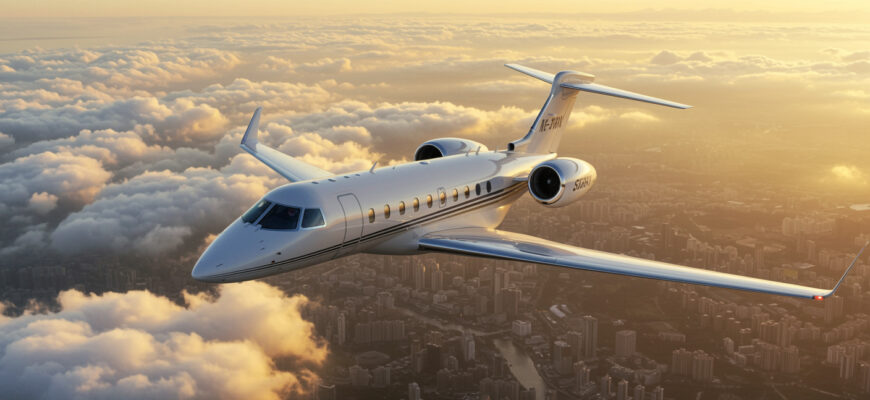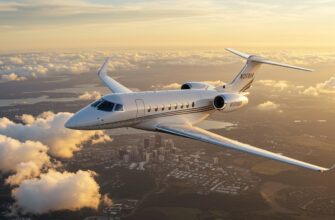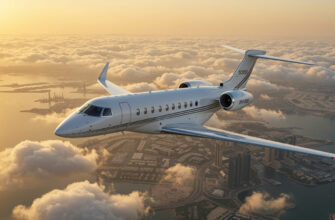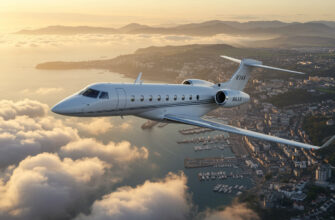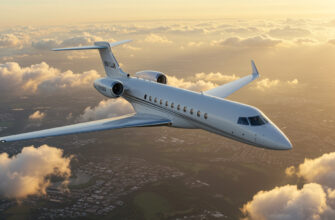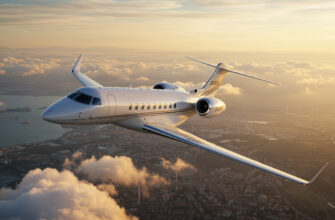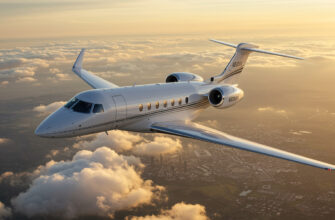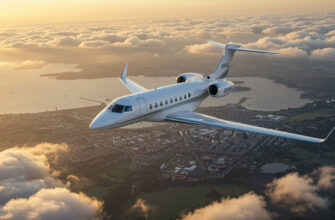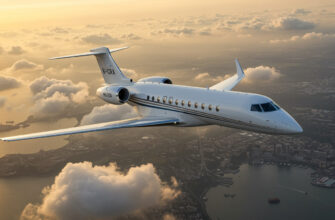Flying privately to and from Beijing has become an increasingly popular choice for affluent travelers seeking a seamless blend of luxury, convenience, and efficiency. China’s bustling capital city attracts business elites, government officials, and high-net-worth leisure travelers, all demanding tailored aviation solutions that traditional commercial flights just can’t match. The surge in demand reflects Beijing’s growing stature as a global hub where time is money, and comfort is key.
Travelers flying private are primarily driven by a handful of critical needs: swift airport access without long waits, plush onboard comfort that allows for rest or work, time-efficient travel schedules, and heightened security measures ensuring a discreet, worry-free experience. Unlike commercial travelers, private jet clients want an exclusive environment that anticipates their every requirement, from gourmet catering to flexible routing.
Despite these advantages, flying private to Beijing comes with its own set of hurdles. Navigating China’s complex customs and immigration processes calls for meticulous planning and accurate documentation. Operational restrictions and slot availability at busy airports require experienced coordination. Additionally, not all airports in the region offer the same level of facilities or FBO (Fixed-Base Operator) services, making the choice of airport a crucial factor that can affect your overall journey.
Major Airports Serving Private Jets In Beijing
Beijing Capital International Airport (PEK)
PEK stands as the primary gateway for private aviation in Beijing. Located about 32 kilometers northeast of the city center, it is China’s busiest airport and one of the world’s largest in terms of passenger traffic and cargo volume. Its extensive infrastructure is well-equipped to handle a high volume of private jets alongside commercial flights, offering superior amenities that appeal to discerning travelers.
Private jet passengers at PEK enjoy access to specialized VIP lounges and dedicated terminals designed to facilitate rapid processing. The airport boasts three parallel runways, each capable of accommodating large aircraft, including the Airbus A380, which means PEK can support virtually any private jet size or model. Operational hours are 24/7, ensuring flexibility for arrivals and departures at virtually any time.
Handling customs and immigration for private flights at PEK is streamlined but requires some paperwork and coordination. Travelers benefit from separate clearance lanes, which greatly reduces wait times compared to commercial terminals. Fixed-Base Operators (FBOs) such as CJET provide tailored ground handling services, including customs brokerage, luxury lounges, fueling, maintenance support, and bespoke concierge offerings. These FBOs are key facilitators of comfort and efficiency on the ground.
Beijing Daxing International Airport (PKX) – Emerging Hub
Opened more recently, Daxing International Airport is quickly gaining momentum as a preferred destination for private jets due to its state-of-the-art facilities and less congested environment. Situated to the south of Beijing, it is strategically designed to complement PEK by alleviating traffic and offering cutting-edge amenities that attract luxury travelers.
The private aviation infrastructure at PKX includes dedicated private jet terminals, newly built FBOs, and advanced runway systems capable of handling large business jets. Its design emphasizes swift, efficient passenger processing, with a customs and immigration system optimized for expedited clearance to shorten turnaround times substantially.
Compared to PEK, Daxing offers some distinct advantages:
- Reduced congestion and faster taxi times
- Proximity to southern Beijing districts and neighboring areas
- Modernized lounges and ground services that enhance the traveler experience
While the selection of FBO providers is still growing, the existing operators maintain high-quality standards, focusing on personalized service and luxury amenities. For many private jet travelers, PKX represents the future of premium travel in the Beijing area, offering a blend of modern technology and ease of navigation not always possible at more crowded airports.
Comparing Beijing’s Airports for Private Jet Travelers
| Airport | Location | Private Jet Facilities | Runway Capacity | Customs/Immigration | Operational Hours | FBO Services |
|---|---|---|---|---|---|---|
| Beijing Capital International Airport (PEK) | 32 km NE of city center | Dedicated VIP terminals, lounges | 3 runways, all large-aircraft capable | Full customs and immigration; separate lanes for private jets | 24/7 operation | Established, multiple providers (e.g., CJET) |
| Beijing Daxing International Airport (PKX) | South of Beijing | Modern private jet terminals, dedicated areas | 4 runways, cutting-edge design | Expedited customs and immigration clearance | 24/7 operation | Growth phase; high-quality, personalized FBO services |
Essential Customs and Security Procedures for Private Jet Travelers
Travelers arriving or departing Beijing by private jet must prepare thoroughly to navigate customs and security smoothly. China enforces strict protocols to maintain safety and regulatory compliance, especially for international private flights.
Key steps for ensuring hassle-free processing include:
- Pre-clearance documentation: Submit all required flight plans, passenger manifests, and aircraft details well in advance to the Civil Aviation Administration of China (CAAC) and customs authorities.
- Visas and permits: Ensure visas are valid for all passengers. Diplomatic or special permits may be required depending on the flight origin and purpose.
- Security screening: Private jets have slightly different security protocols, but all passengers and baggage undergo thorough checks similar to commercial flights.
- Expedited handling tips: Coordinate with your FBO or charter operator to schedule arrivals or departures during low-traffic hours and prepare all paperwork in advance to minimize delays.
Being proactive with documentation and leveraging experienced on-ground teams can make the difference between a smooth entry or departure and frustrating delays. Private aviation providers specializing in the Beijing market often offer concierge and administrative services that help clients breeze through these formalities with minimal downtime.
Types of Private Jets Commonly Used on Beijing Routes
When planning private jet travel to or from Beijing, one of the first questions that comes up is: which aircraft fits my needs? From quick hops within the region to transcontinental journeys, the right jet depends on factors like flight distance, passenger count, and comfort preferences. Beijing’s busy aviation scene means a range of options are regularly chartered, offering flexibility and luxury at every level.
Light Jets: Ideal for Short-Haul Regional Trips
If the goal is a swift regional trip—say, from Shanghai or Seoul to Beijing—light jets often strike the perfect balance between speed and cost-efficiency. These jets handle quick hops where a long-range machine would be overkill but a turboprop might feel cramped or slow.
Examples: Embraer Phenom 300, Cessna Citation CJ4
The Embraer Phenom 300 enjoys a reputation for reliability and sleek, quiet cabins, seating up to 7 passengers comfortably. The Citation CJ4 is another favorite, boasting excellent fuel efficiency and a smooth ride. Both jets can access smaller airports closer to city centers, shaving valuable travel time.
Typical Pricing and Operating Costs
Chartering these light jets to or from Beijing usually falls in the range of $3,000 to $4,500 per flight hour. Operating costs are modest compared to bigger jets, thanks to lower fuel burn and crew expenses. This makes them well-suited for short trips without sacrificing sophistication.
Flight Durations and Range Considerations
Light jets typically cover about 1,500 to 2,000 nautical miles per flight, meaning common Beijing routes within East Asia fall comfortably within range. For instance, a Beijing to Tokyo leg usually clocks around 3 hours. Longer hops, like to Europe or the Middle East, push beyond their limits and call for larger aircraft.
Midsize Jets: Balanced Comfort and Operational Flexibility
For flights that require a touch more cabin space and flight endurance without stepping up to the heavy jet category, midsize jets hit the sweet spot. They deliver a more spacious interior plus improved range, perfect for those wanting versatility as well as comfort.
Examples: Bombardier Challenger 350, Hawker 800XP
The Challenger 350 stands out with a plush cabin fitting 8-10 passengers and a transcontinental range that easily handles trips across Asia and beyond. Meanwhile, the Hawker 800XP is praised for its agility and smooth ride, favored by business travelers making frequent Beijing calls.
Pricing Overview and Hourly Charter Rates
Midsize jets typically command charter rates between $4,500 and $7,000 per flight hour, reflecting their enhanced performance and cabin amenities. These rates suit travelers needing a blend of efficiency and luxury, often for flights lasting 3-5 hours covering regional to intercontinental legs.
Key Performance Attributes for Beijing Routes
What really makes midsize jets attractive on Beijing routes is their ability to access both major airports and some secondary airfields with adequate runways, optimizing city access and turnaround times. Their range supports nonstop flights to metropolitan centers like Singapore, Dubai, or nearly all of Southeast Asia without refueling stops.
Heavy Jets and Ultra-Long-Range Aircraft: Luxury for International and Intercontinental Journeys
Flying from Beijing to destinations across the globe calls for jets with serious range and space — that’s where heavy and ultra-long-range aircraft take the spotlight. Their plush cabins come with bedrooms, full galleys, and advanced entertainment systems, transforming long hours into restful productivity or relaxation.
Examples: Gulfstream G650ER, Dassault Falcon 7X
The Gulfstream G650ER is legendary for combining speed with one of the longest ranges in business aviation — reaching nearly 7,000 nautical miles nonstop. The Dassault Falcon 7X, with its signature three-engine design, offers both ultra-long range and excellent short-field performance, making it versatile for various Beijing departures.
Cost Factors and Typical Usage Scenarios
These luxury giants come with charter pricing starting from $10,000 and up to $15,000+ per flight hour. They’re often booked for direct flights between Beijing and Europe, the U.S. West Coast, or Middle Eastern hubs, where nonstop flights reduce travel time dramatically compared to commercial airlines.
Flight Durations and Passenger Experience Enhancements
Flight times on these jets can range from 11 to 14 hours nonstop depending on the route. For example, a Beijing to Los Angeles flight typically lasts about 12 hours in a Gulfstream G650ER. The onboard environment is designed to minimize jet lag and fatigue with advanced cabin pressurization, temperature control, and spacious seating arrangements allowing passengers to work or sleep comfortably.
Choosing the Right Aircraft Based on Route, Passenger Count, and Budget
Matching jet type to your trip involves juggling priorities: distance, number of travelers, and how much comfort matters. A quick in-region flight with a few friends might lean toward a light jet. Larger groups or transcontinental flights demand midsize or heavy jets. Budget constraints also shape choices, especially when hourly charter rates rack up on longer flights.
Additional considerations include:
- Passenger capacity: Picking an aircraft that comfortably seats all adults with luggage space is key—no squeezing allowed.
- Flight range: Ensure the chosen jet can fly nonstop or with minimal stops to your destinations to avoid unexpected delays.
- Airport access: Smaller jets offer flexibility for less congested or closer airports, while heavy jets require longer runways available mostly at major airports.
How Aircraft Capabilities Interact with Beijing Airport Facilities and Runway Constraints
Beijing Capital International Airport (PEK) handles the lion’s share of private jet traffic with three long runways capable of servicing ultra-large aircraft like the Airbus A380. Its VIP terminals and robust Fixed-Base Operator (FBO) services make it friendly to heavy and ultra-long-range jets.
Beijing Nanyuan Airport (NAY), on the other hand, has a shorter single runway and more limited facilities, which restricts use mostly to light or midsize jets. Nanyuan also lacks customs and immigration for international flights, steering many private flights to PEK for smoother border processing.
Aircraft with shorter takeoff and landing requirements enjoy more options in Beijing’s airport ecosystem, potentially reducing ground travel time. Heavier jets mandate PEK’s main runways but benefit from its tailored VIP services and ground handling, ensuring seamless arrivals and departures even during peak periods.
Pricing Insights and Flight Duration Expectations
Factors Influencing Private Jet Charter Pricing on Beijing Routes
Several elements nudge charter costs up or down, and understanding them helps trim expenses without compromising experience. Flight duration is the biggest—more hours in the air equals higher fuel and crew costs. Aircraft size and model matter too, since larger planes cost more to operate and maintain.
Extra fees can pop up around airport handling, special catering, ground transportation, and peak season surcharges. Weather and air traffic congestion may add delays, nudging flight time and costs higher. Advance booking can unlock better rates, especially if travel dates are flexible.
Typical Charter Price Ranges by Aircraft Category
On Beijing routes, expect these hourly rate ballparks:
- Light jets: $3,000 to $4,500
- Midsize jets: $4,500 to $7,000
- Heavy and ultra-long-range jets: Starting around $10,000, reaching $15,000+
Depending on the route, total charter fees stack up quickly but factoring in convenience, speed, and comfort often justifies the investment, particularly for business travelers or luxury seekers.
Average Flight Times to Popular Departure and Arrival Cities
Flights connecting Beijing to key regional and international hubs generally fall within these durations:
- Beijing to Shanghai: About 2 hours (Light jets and midsize jets)
- Beijing to Tokyo: Around 3 hours (Light and midsize jets)
- Beijing to Hong Kong: Roughly 3.5 hours (Midsize jets)
- Beijing to Dubai: Approximately 7 hours (Heavy jets)
- Beijing to Los Angeles: Close to 12 hours (Ultra-long-range jets)
Seasonal Trends and Booking Considerations to Optimize Cost-Efficiency
Peak travel seasons, such as Chinese New Year or Golden Week, tend to inflate charter rates as demand surges. Planning flights during off-peak months can offer substantial savings. Weekday charters often cost less than weekends, and booking well in advance helps secure preferred jets and routes at competitive prices.
Being flexible on departure times or airport choice near Beijing can further reduce costs. For example, early morning or late-night slots may cost less, and opting for Nanyuan Airport for domestic flights might trim fees if customs clearance isn’t needed.
